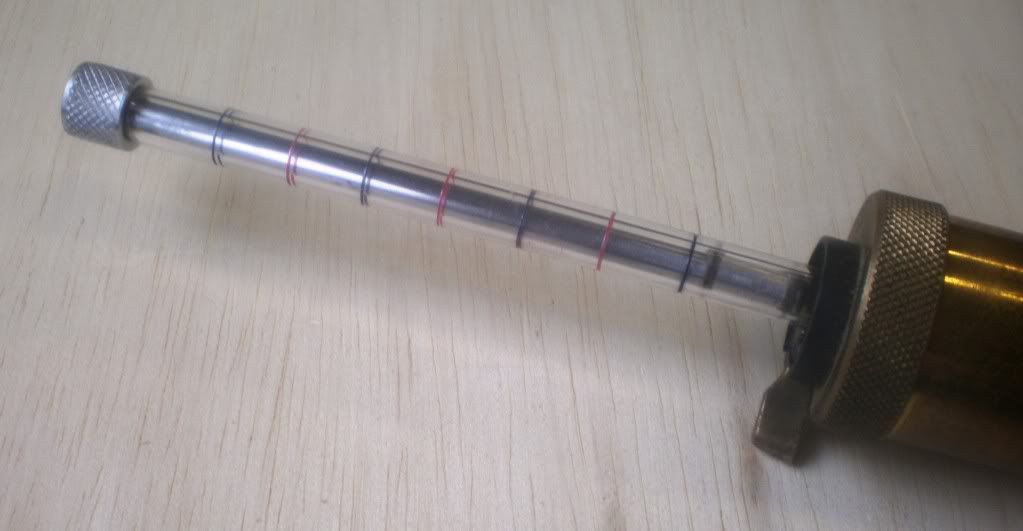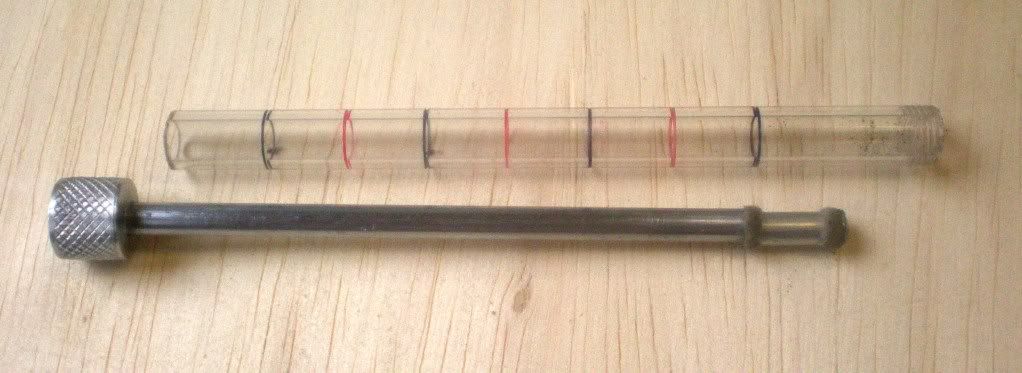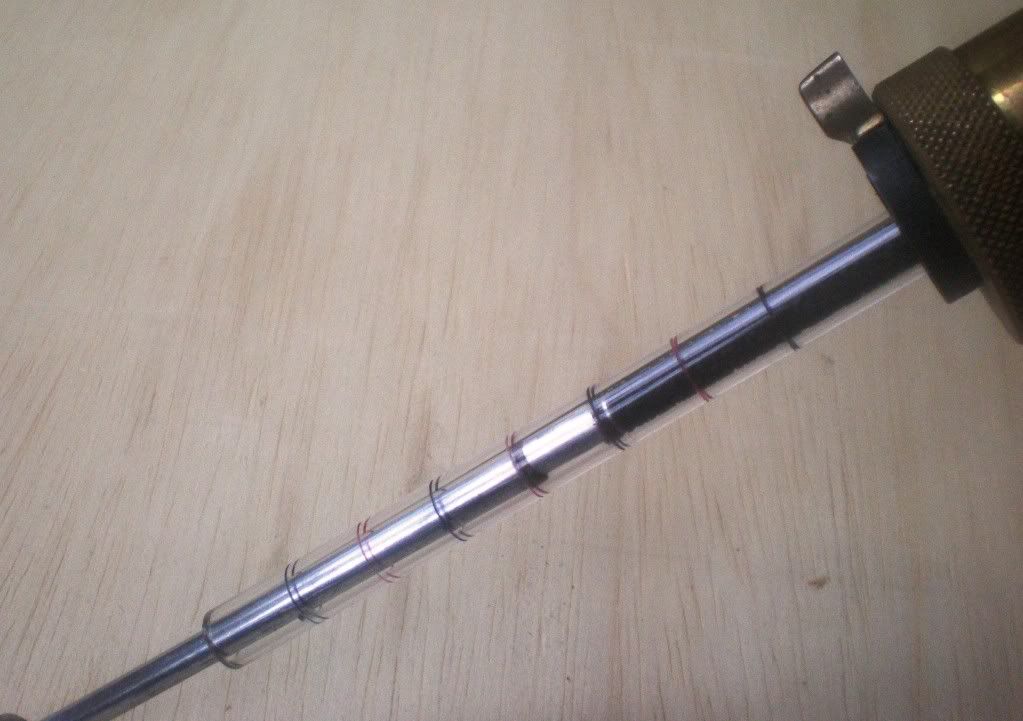You know that every once in a while you come to a revelation in your life and it makes you feel so dumb?
I use the CVA 1400 flask. I have two of them, one with a 30 grain spout and the other has a 15 grain spout.
Last week I took the CED M2 Chronograph for the first time and I found that my bullet speeds with the ROA were low, under 500 fps. But they were only low when I measured from the 1400. When I shot the ROA or the Walker using my teloscopic measure (which I don't like but which allows me to measure bigger charges) I got anticipated speed.
This morning I was so miffed by the presumably unexplained bullet speeds that I decided to check the spouts. The 30 grain spout is actually a 20 grain spout when measured volumetrically. It throws a charge of GOEX fffg that weighs 19 grains consistently. (The missing grain of powder comes from me pressing my finger into the end of the spout.)
The 15 grain spout actually throws a charge weighing a consistent 12 grains.
I am well aware of the discussions to the effect that we measure poweder volumetrically but that the measure is actually weight. I have read and participated in these discussions and fully understand the concept.
My error was in assuming that the seller of the flasks (I bought both of them used from eBay) knew what he was talking about. I am a little embarrassed that I did not check them at the get-go. But I am mighty thankful that I have a chronograph which works well enough for me to infer these data.
Oh well...Live and learn.
I use the CVA 1400 flask. I have two of them, one with a 30 grain spout and the other has a 15 grain spout.
Last week I took the CED M2 Chronograph for the first time and I found that my bullet speeds with the ROA were low, under 500 fps. But they were only low when I measured from the 1400. When I shot the ROA or the Walker using my teloscopic measure (which I don't like but which allows me to measure bigger charges) I got anticipated speed.
This morning I was so miffed by the presumably unexplained bullet speeds that I decided to check the spouts. The 30 grain spout is actually a 20 grain spout when measured volumetrically. It throws a charge of GOEX fffg that weighs 19 grains consistently. (The missing grain of powder comes from me pressing my finger into the end of the spout.)
The 15 grain spout actually throws a charge weighing a consistent 12 grains.
I am well aware of the discussions to the effect that we measure poweder volumetrically but that the measure is actually weight. I have read and participated in these discussions and fully understand the concept.
My error was in assuming that the seller of the flasks (I bought both of them used from eBay) knew what he was talking about. I am a little embarrassed that I did not check them at the get-go. But I am mighty thankful that I have a chronograph which works well enough for me to infer these data.
Oh well...Live and learn.



